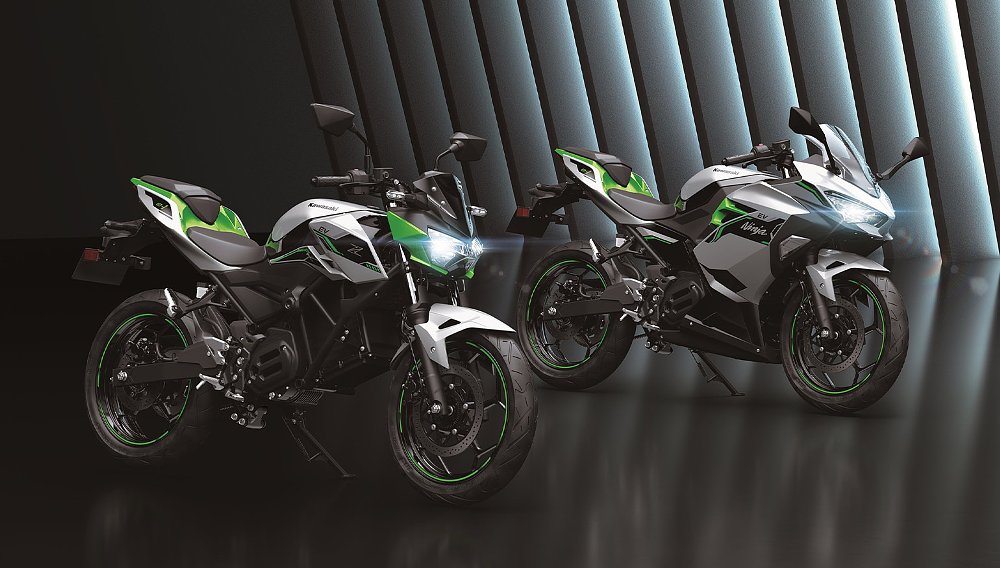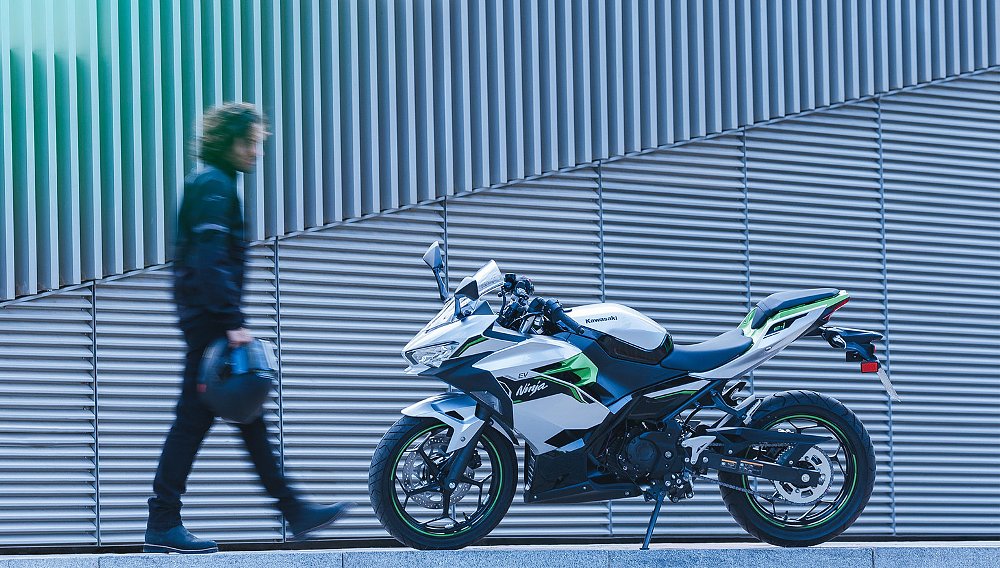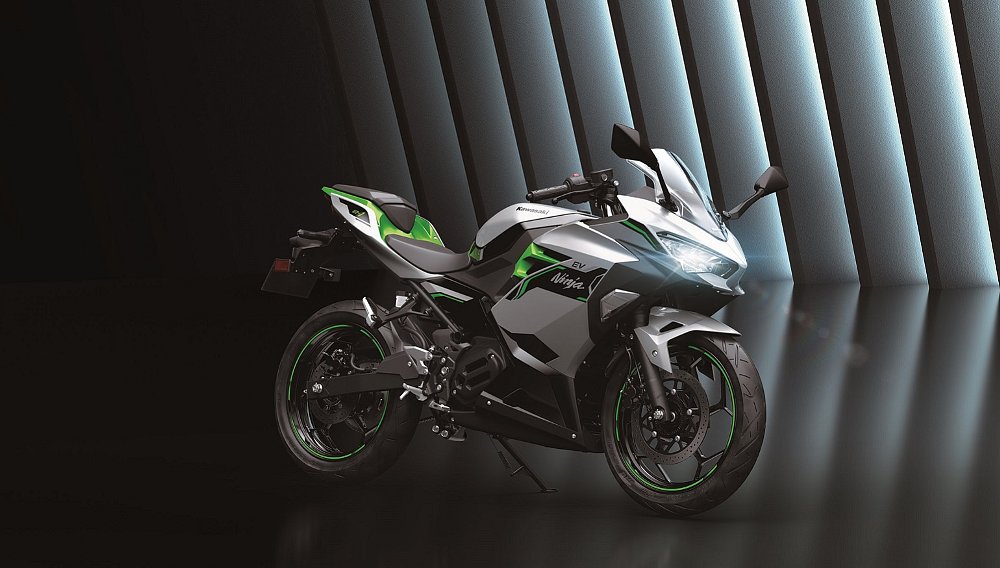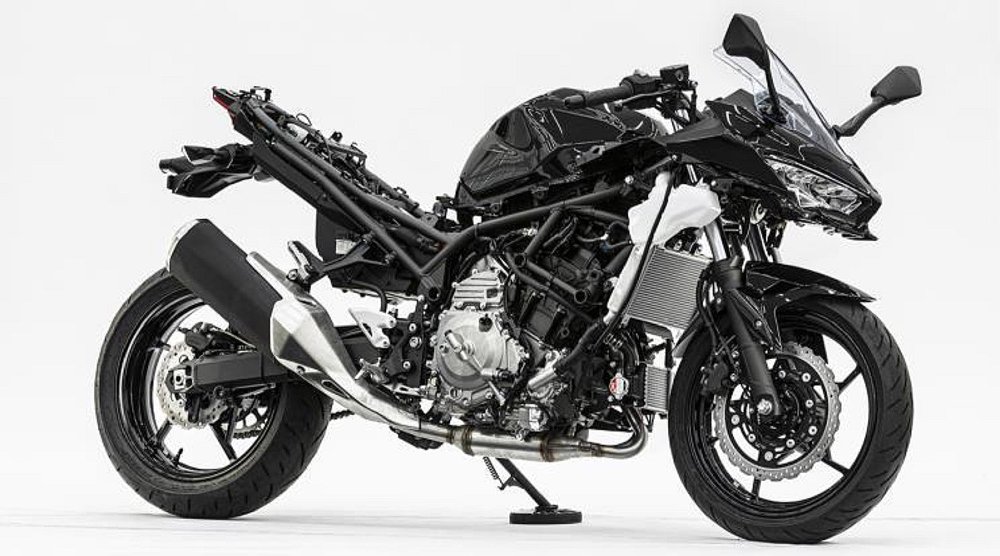When Kawasaki introduced the Ninja e-1 and Z e-1 last month, the electric naysayers honed in on four figures: 7 rated horsepower (12 maximum horsepower), a 51-mph top speed (59 mph with e-boost), a 41-mile range, and a 7.5-hour recharge time. OK, maybe that’s more like six figures, but the collective reaction may not have been so critical had one figure been lower — price.
Then there's the pricing: the all-electric Ninja goes for $7,599 and the e-powered Z starts at $7,299. That's lower than street-legal electric motorcycles from the established competition in the United States, such as Zero, but of course more expensive than comparable or even more capable internal-combustion models. In parts of the world with tiered licensing, the electric Kawasakis may be an easier sale, but can the company succeed in the U.S. market with a motorcycle that's mainly limited to duty within city limits?
Kawasaki is about to find out as it's now taking pre-orders and pitching its first-ever electric motorcycles to urban commuters.
Drumming up demand
According to Kawasaki’s latest release, “Early adopters have until December 31 to seize the opportunity to order the Ninja e-1 or Z e-1.” The brand’s website leans into similar scarcity tactics, noting that customer order requests will be accepted “now through November 30, 2023, or until production of this model is sold out.”

In the United States, the e-1s are already on the back foot. Even most commuters require a motorcycle capable of highway speeds, a feat that the e-Ninja and e-Z don’t meet.

In all fairness, Kawasaki does, in fact, bring several innovations to the budding electric motorcycle market. Its e-boost feature enhances motor performance for 15 seconds, enabling riders to escape danger or power up inclines. The removable lithium-ion battery packs ease the charging process for apartment dwellers while Walk mode helps maneuver the bikes in and out of tight spaces. A Bluetooth-connected 4.3-inch TFT color display and all-around LED lighting only sweeten the pot.
Yet, that still begs the question: are the Ninja e-1 and Z e-1 worth the money? Only the sales figures of the two go-green machines will determine the answer to that question. After all, that’s the only figure that really matters.
| 2024 Kawasaki Z e-1 and Ninja e-1 | |
|---|---|
| Price (MSRP) | $7,599 (Ninja e-1), $7,299 (Z e-1) |
| Motor | Interior permanent magnet synchronous |
| Final drive | Chain |
| Claimed horsepower | 7 rated; 12 maximum |
| Frame | Steel trellis |
| Front suspension | 41 mm fork; 4.7 inches of travel |
| Rear suspension | Single shock, adjustable for preload; 5.2 inches of travel |
| Front brake | Single two-piston caliper, 290 mm disc with ABS |
| Rear brake | Single two-piston caliper, 220 mm disc with ABS |
| Rake, trail | 24.4 degrees, 3.7 inches |
| Wheelbase | 53.9 inches |
| Seat height | 30.9 inches |
| Claimed range | 41 miles city |
| Claimed battery capacity | 3.0 kWh |
| Claimed charge time | 7.5 hours @ Level 1 |
| Tires | 100/80-17 front, 130/79-17 rear |
| Claimed weight | 308.7 pounds (Ninja e-1); 297.7 (Z e-1) |
| Available | Pre-orders taken now |
| Warranty | 24 months |
| More info | kawasaki.com |

 Membership
Membership







